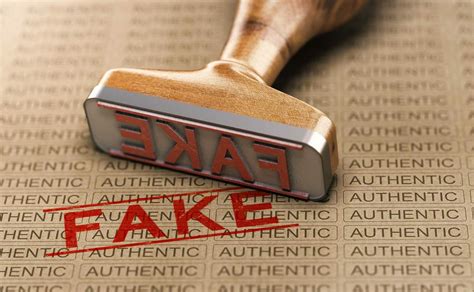What online platforms exist for reporting counterfeits?
Counterfeit products pose a significant threat to consumers and brands alike. Recognizing this, various online platforms have emerged to help individuals and organizations report counterfeit items. These platforms facilitate the reporting process, ensuring that counterfeit goods are addressed effectively.
One of the primary platforms for reporting counterfeits is the Consumer Product Safety Commission (CPSC). The CPSC allows consumers to report unsafe products, including counterfeits. Their user-friendly interface enables quick submissions, helping protect others from potential harm. Reporting through this platform ensures that federal regulators are aware of counterfeit issues.
Another essential resource is the Federal Trade Commission (FTC). The FTC provides an online complaint assistant that guides users through the process of reporting counterfeit goods. Users can submit detailed information about the product and seller, contributing to the FTC’s ongoing efforts to combat fraud.
For those encountering counterfeit goods on social media, platforms like Facebook and Instagram offer reporting tools. Users can report fake products directly through the posts or advertisements, allowing the platforms to investigate and take necessary actions against violators. This grassroots approach helps combat counterfeiting at the source.
Additionally, many brand owners have established their own reporting systems. For example, luxury brands often have dedicated hotlines or online forms for reporting counterfeit items. This direct line of communication allows brands to take swift action against counterfeiters and provides valuable data for their anti-counterfeit efforts.
Online marketplaces such as eBay and Amazon also have robust mechanisms for reporting counterfeits. Sellers and buyers can report suspected counterfeit products, triggering investigations by the platform’s security teams. These systems are vital for maintaining the integrity of online shopping.
Another helpful resource is the International Anti-Counterfeiting Coalition (IACC). The IACC offers a platform for individuals and brands to report counterfeit goods, fostering collaboration between law enforcement and private industry to combat counterfeiting globally.
Moreover, local law enforcement agencies may have online reporting systems for counterfeit goods. It’s crucial for individuals to check their local government websites for resources available in their area, as many jurisdictions are taking steps to address counterfeiting.
Finally, educational platforms like Trademarkia provide resources on how to report counterfeits effectively. They offer guides and contact information for various platforms, helping users navigate the reporting process more efficiently.
In summary, several online platforms exist for reporting counterfeits, including federal agencies, social media sites, online marketplaces, brand-specific channels, and international organizations. Leveraging these resources can significantly aid in the fight against counterfeit products.
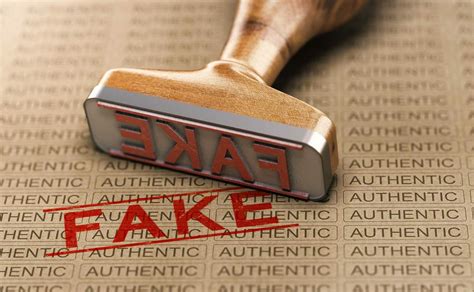
How can consumers effectively report counterfeit products?
Reporting counterfeit products effectively requires a clear understanding of the process and the information needed. Consumers play a crucial role in combating counterfeiting by reporting suspicious items to the appropriate authorities.
The first step in reporting is to gather all relevant information about the counterfeit product. This includes details such as the product’s name, brand, seller information, and any documentation proving its authenticity. Detailed information helps authorities take swift action against counterfeiters.
Next, consumers should identify the appropriate platform to report their findings. As previously discussed, platforms such as the CPSC and FTC are excellent starting points. Additionally, contacting the brand owner directly can lead to quicker resolution, as they often have dedicated resources to handle such issues.
When using online reporting forms, clarity is key. Consumers should fill out all sections of the form accurately and thoroughly. Providing photographs of the counterfeit item, along with a side-by-side comparison to the authentic product, can greatly aid the investigation.
It is also advisable to report counterfeit items found on social media platforms directly through the respective reporting tools. These platforms have strict policies against counterfeiting and often act quickly once a report is submitted.
For online marketplace purchases, consumers should use the specific reporting mechanisms provided by the platform. Both eBay and Amazon have systems that allow users to flag counterfeit products easily, ensuring that these reports are taken seriously.
Furthermore, consumers should keep records of their reports. Documenting the date of the report, the platform used, and any response received can be helpful for future reference and for tracking the effectiveness of reporting efforts.
In addition to reporting, consumers can educate themselves about counterfeit products. Many organizations provide resources on how to identify fakes, which empowers consumers to make informed decisions while shopping.
Finally, joining anti-counterfeiting campaigns or organizations can amplify individual efforts. Many groups work to raise awareness about counterfeiting and provide tools for reporting and education.
By following these steps, consumers can effectively report counterfeit products, helping to protect themselves and others from fraudulent items.
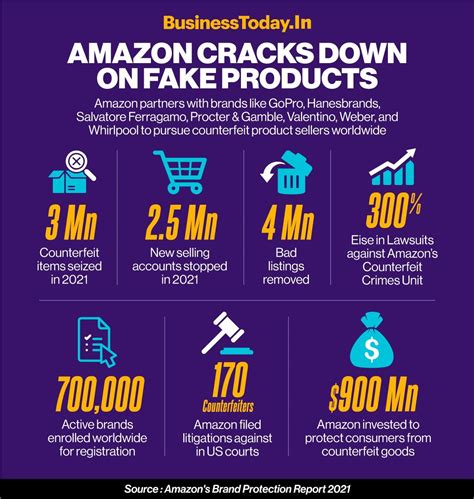
What are the legal implications of reporting counterfeits?
Understanding the legal implications of reporting counterfeits is essential for consumers and businesses alike. When reporting suspected counterfeit products, individuals must navigate various legal frameworks and protections.
Firstly, it is important to recognize that reporting counterfeits is not only a civic duty but also a legal obligation in some jurisdictions. Failing to report known counterfeits may expose individuals to liability, particularly if they are involved in selling such products.
When submitting a report, individuals must ensure that they provide accurate and truthful information. False reports can lead to legal repercussions, including potential defamation claims from individuals or businesses that are wrongly accused.
In many cases, organizations that receive counterfeit reports, such as the FTC or CPSC, offer legal protections to whistleblowers. These protections encourage individuals to come forward without fear of retaliation, which is crucial for effective enforcement against counterfeiting.
Moreover, consumers should be aware of their rights when reporting counterfeits. Many countries have laws that protect consumers from fraud, allowing them to seek restitution for damages incurred due to counterfeit products.
Additionally, organizations may have their legal teams handle counterfeit reporting, ensuring that the process complies with relevant laws and regulations. This often involves coordinating with law enforcement to address criminal activity related to counterfeiting.
Intellectual property laws play a significant role in the reporting process. Understanding trademarks and copyrights can help individuals determine whether a product is counterfeit and the proper channels for reporting it.
In cases where counterfeiting is rampant, individuals may choose to pursue legal action against counterfeiters. This can involve working with legal counsel to file lawsuits or claims against those infringing on intellectual property rights.
Lastly, collaboration between consumers and brands is vital in combating counterfeiting. Legal agreements or partnerships can empower individuals to report counterfeits more effectively, ensuring that brand owners take swift action against violators.
In conclusion, the legal implications of reporting counterfeits are multifaceted. Understanding these aspects can help individuals navigate the reporting process while protecting themselves legally.
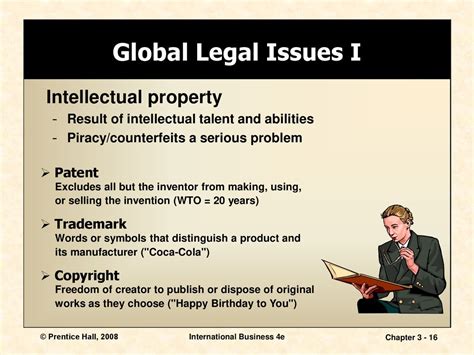
What information should I include when reporting counterfeits?
When reporting counterfeits, including comprehensive and detailed information is crucial for effective action. Providing relevant data helps authorities and brands investigate the issue thoroughly and take appropriate measures.
Firstly, clearly identify the product in question. This includes the product name, brand, model number, and any other identifying information. Specific details help in assessing whether the item is indeed counterfeit.
Next, include the seller’s information. This should consist of the seller’s name, contact information, and any known aliases. If the product was purchased online, providing the website or platform where the purchase was made is vital.
Photographs are essential when reporting counterfeits. Include clear images of the counterfeit item from various angles, showcasing any distinguishing features. It’s also beneficial to provide comparison images with the authentic product to highlight discrepancies.
Document the circumstances of the purchase. Include details such as the date of purchase, price paid, and method of payment. This information can help authorities trace the transaction and identify patterns in counterfeiting.
Providing context is also important. Explain how you discovered the product was counterfeit, including any research or comparison that led to this conclusion. This narrative can help investigators understand the situation better.
In addition to the product and seller details, include any communication with the seller regarding the counterfeit issue. This can include emails, messages, or any responses received. Such evidence can be pivotal in investigations.
Many reporting platforms have specific fields for categorizing the type of counterfeit. Ensure that you select the most relevant categories, as this helps prioritize the report and directs it to the appropriate teams.
Finally, be honest and transparent in your report. Providing misleading or inaccurate information can undermine the investigation and may have legal repercussions.
By including these critical details, individuals can contribute effectively to the fight against counterfeiting, facilitating swift action from authorities and brand owners.

What steps do online marketplaces take to handle counterfeit reports?
Online marketplaces play a significant role in combating counterfeit products, implementing various measures to address reports of counterfeiting. These steps are crucial for maintaining consumer trust and protecting brand integrity.
First, upon receiving a counterfeit report, the marketplace typically initiates an investigation process. This involves reviewing the reported product and seller details to assess the validity of the claim. Automated systems often flag suspicious listings for further scrutiny.
Next, online marketplaces may contact the seller for clarification. This allows sellers to provide evidence of authenticity or explain discrepancies. Depending on the seller’s response, the marketplace may decide to take further action.
If the investigation confirms that the product is counterfeit, the marketplace usually removes the listing immediately. This swift action helps prevent further sales and protects consumers from fraudulent products.
Additionally, online marketplaces may issue warnings to the seller. Repeated violations can lead to account suspension or permanent bans, which incentivizes sellers to comply with intellectual property laws.
Many marketplaces collaborate with brand owners to address counterfeiting proactively. This partnership often involves sharing data on reported counterfeits and identifying trends in counterfeit activity, enabling more effective enforcement.
Furthermore, online marketplaces implement educational programs for sellers, providing guidelines on how to avoid selling counterfeit products. These resources help sellers understand their responsibilities and the importance of ensuring product authenticity.
Consumer education is also a priority. Online marketplaces often provide information on identifying counterfeit products and reporting procedures, empowering consumers to act against counterfeiting.
Some marketplaces even have dedicated teams for handling intellectual property issues. These teams are responsible for investigating reports, coordinating with law enforcement, and ensuring compliance with legal standards.
Finally, online marketplaces frequently review and update their policies regarding counterfeiting to stay aligned with changing regulations and industry standards. This commitment to evolving practices ensures ongoing effectiveness in combating counterfeit goods.
Through these steps, online marketplaces demonstrate their commitment to maintaining a safe shopping environment and protecting both consumers and brands from the risks associated with counterfeiting.

How can brands protect themselves from counterfeiting?
Brands face significant challenges in protecting themselves from counterfeiting. Implementing proactive measures is essential for maintaining brand integrity and consumer trust.
One of the most effective strategies is to invest in robust intellectual property protection. This includes registering trademarks and copyrights to establish legal ownership over brand elements, which provides a solid foundation for combating counterfeiting.
Brands should also monitor the market continuously for counterfeit products. This can involve using technology and data analytics to identify suspicious listings or unauthorized sellers, enabling quick action against counterfeiting.
Establishing a clear reporting system for consumers is another crucial step. By providing easy-to-access channels for reporting counterfeit products, brands can engage consumers in their anti-counterfeiting efforts and gather valuable data on counterfeiting trends.
Education plays a vital role in brand protection. Brands should invest in consumer awareness campaigns, teaching customers how to identify authentic products and report suspicious items. Informed consumers are less likely to fall victim to counterfeit goods.
Collaboration with law enforcement and industry organizations can amplify brand protection efforts. By working together, brands can share information, resources, and strategies for effectively combating counterfeiting.
In addition, brands can utilize technology such as holograms, QR codes, or RFID tags to authenticate products. These technologies help consumers verify product authenticity and deter counterfeiters.
Another strategy involves utilizing online marketplaces’ reporting mechanisms to address counterfeit listings swiftly. Engaging with these platforms ensures that brands can protect their products in the digital space effectively.
Brands can also consider legal action against counterfeiters when necessary. Taking legal measures can deter future counterfeiting and signal to consumers that the brand is serious about protecting its identity.
Lastly, staying informed about evolving counterfeiting trends and tactics is essential. Brands should participate in industry conferences and workshops to learn about the latest developments in anti-counterfeiting measures.
By implementing these strategies, brands can protect themselves effectively from counterfeiting and maintain the trust of their consumers.
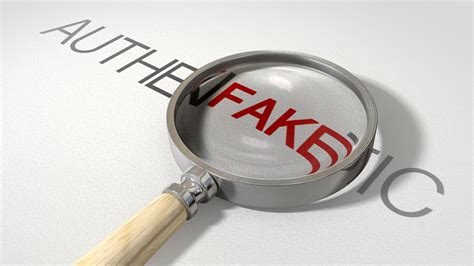
What role do social media platforms play in reporting counterfeits?
Social media platforms have become significant players in the fight against counterfeit products. Their role involves providing tools for reporting and actively enforcing policies against counterfeiting.
First, most social media platforms have built-in reporting features that allow users to flag counterfeit content. This immediate feedback mechanism helps platforms identify and address counterfeit products quickly.
In addition to reporting tools, social media platforms actively monitor content for violations of their terms of service. Automated systems often flag suspicious posts or advertisements, which are then reviewed by human moderators for further action.
Social media companies also collaborate with brands to create awareness about counterfeiting. Many platforms work with brand owners to educate users on recognizing counterfeit products and understanding the reporting process.
Furthermore, social media platforms may take proactive measures by removing counterfeit content before it can reach a wider audience. This can involve tracking trends in counterfeiting and adjusting algorithms to limit the visibility of suspicious content.
Engaging users in anti-counterfeiting campaigns is another strategy employed by social media platforms. These campaigns often encourage users to report counterfeit products actively and share information about the dangers of buying fakes.
Some platforms even provide support for brands in establishing verified accounts, which helps users identify authentic brands and reduces the chances of encountering counterfeit content.
Additionally, social media platforms may partner with law enforcement to address counterfeiting more effectively. By sharing information and collaborating on investigations, platforms can contribute to legal action against counterfeiters.
Consumer education initiatives are also crucial. Social media platforms often publish guidelines on how to identify counterfeit products and the importance of reporting suspicious items to help protect users.
Overall, social media platforms play a pivotal role in combating counterfeiting by providing reporting tools, collaborating with brands, and actively monitoring content to maintain a safer online environment for consumers.
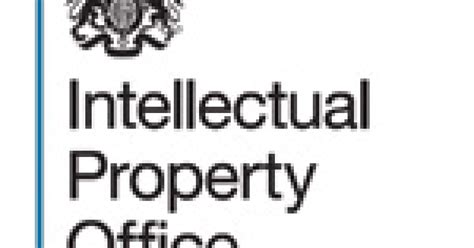
What challenges do consumers face when reporting counterfeits?
Reporting counterfeit products can be a daunting task for consumers, as several challenges can hinder their efforts. Understanding these obstacles is essential for developing effective solutions.
One of the primary challenges is the lack of awareness about reporting procedures. Many consumers may not know where or how to report counterfeit items, leading to underreporting of these issues.
Additionally, consumers may feel intimidated by the reporting process. Concerns about legal implications, or fear of retaliation from sellers, can deter individuals from coming forward with their reports.
Another significant barrier is the complexity of the information required when filing a report. Consumers may struggle to gather all necessary details, such as seller information and product documentation, which can hinder their ability to report effectively.
The speed of action taken by reporting platforms can also be a concern. Consumers often expect immediate resolution, and when reports do not lead to swift action, it can lead to frustration and disillusionment.
Furthermore, consumers may encounter issues with online platforms that lack user-friendly interfaces for reporting. Complicated forms or lengthy processes can discourage individuals from submitting reports altogether.
Another challenge is the emotional toll of discovering a counterfeit product. The disappointment and frustration associated with being deceived can impact a consumer’s willingness to take action against counterfeiters.
In some cases, consumers may be concerned about the efficacy of their reports. Doubts about whether their submissions will lead to any meaningful action can undermine their motivation to report.
Privacy concerns can also pose challenges. Some individuals may be hesitant to provide personal information when filing reports, fearing misuse or exposure of their data.
Finally, consumers may face difficulties in distinguishing between counterfeit products and legitimate items, especially with high-quality fakes. This uncertainty can prevent them from reporting items they believe to be counterfeit.
By addressing these challenges, stakeholders can create a more supportive environment for consumers reporting counterfeits, ultimately enhancing the fight against counterfeit products.
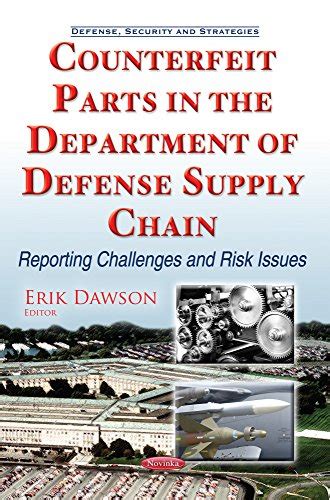
What is the future of online counterfeit reporting platforms?
The future of online counterfeit reporting platforms is promising, with several trends and advancements anticipated to enhance their effectiveness. These changes will significantly impact the fight against counterfeiting in the digital landscape.
One key trend is the integration of artificial intelligence (AI) and machine learning technologies. These advancements can improve the detection of counterfeit listings, allowing platforms to flag suspicious items more efficiently and accurately.
Additionally, the rise of blockchain technology offers potential solutions for ensuring product authenticity. By leveraging blockchain, brands can create secure, tamper-proof records of product origins, making it easier for consumers to verify authenticity.
Collaboration between stakeholders is expected to strengthen, with increased partnerships between brands, law enforcement, and online platforms. This cooperative approach will enable more effective information sharing and coordinated efforts against counterfeiting.
Consumer education initiatives are likely to expand, with platforms investing more in awareness campaigns. Educating users on how to identify counterfeit products and report them effectively will empower consumers in the fight against fakes.
Furthermore, the development of more user-friendly reporting tools is anticipated. Simplifying the reporting process will encourage more individuals to report counterfeit products, leading to increased awareness and action.
Global cooperation in combating counterfeiting is also expected to grow. International organizations may work towards standardized reporting mechanisms, facilitating cross-border collaboration against counterfeit networks.
Social media platforms will likely continue to evolve their roles in reporting counterfeits, utilizing their vast user bases to encourage active participation in reporting and preventing the sale of counterfeit goods.
Finally, regulatory developments may shape the future of counterfeit reporting. Governments are likely to implement stricter regulations on counterfeiting, which can influence how online platforms address these issues.
In conclusion, the future of online counterfeit reporting platforms is poised for significant advancements, driven by technology, collaboration, and consumer engagement.

| Question | Key Points |
|---|---|
| What online platforms exist for reporting counterfeits? | Various platforms including CPSC, FTC, social media, and brand-specific channels. |
| How can consumers effectively report counterfeit products? | Gather information, use appropriate platforms, document, and keep records. |
| What are the legal implications of reporting counterfeits? | Obligations to report, potential legal consequences for false reports, protections for whistleblowers. |
| What information should I include when reporting counterfeits? | Product details, seller information, photographs, purchase context. |
| What steps do online marketplaces take to handle counterfeit reports? | Investigations, seller communication, collaboration with brands. |
| How can brands protect themselves from counterfeiting? | Intellectual property protection, market monitoring, consumer education. |
| What role do social media platforms play in reporting counterfeits? | Reporting tools, monitoring content, collaboration with brands. |
| What challenges do consumers face when reporting counterfeits? | Apathy, intimidation, complexity of the process, emotional toll. |
| What is the future of online counterfeit reporting platforms? | AI integration, blockchain technology, global cooperation. |
FAQ
What is the best platform to report counterfeits?
The best platform can vary based on the type of counterfeit product; however, the FTC and CPSC are commonly recommended.
How long does it take to investigate a counterfeit report?
Investigation times can vary widely, from days to weeks, depending on the platform and complexity of the case.
Can I report a counterfeit product anonymously?
Many platforms allow anonymous reporting, but providing contact information can help with follow-up inquiries.
Are there any penalties for reporting counterfeit products falsely?
Yes, submitting false reports can lead to legal consequences, including potential defamation claims.
What should I do if my report is ignored?
If your report is ignored, consider following up or reporting to additional platforms to increase visibility.
How can I educate myself about identifying counterfeits?
Resources are available through brands, consumer protection agencies, and anti-counterfeiting organizations to help educate consumers.
Are there any organizations that help with counterfeit reporting?
Yes, organizations like the IACC provide resources and assistance for reporting counterfeits effectively.

